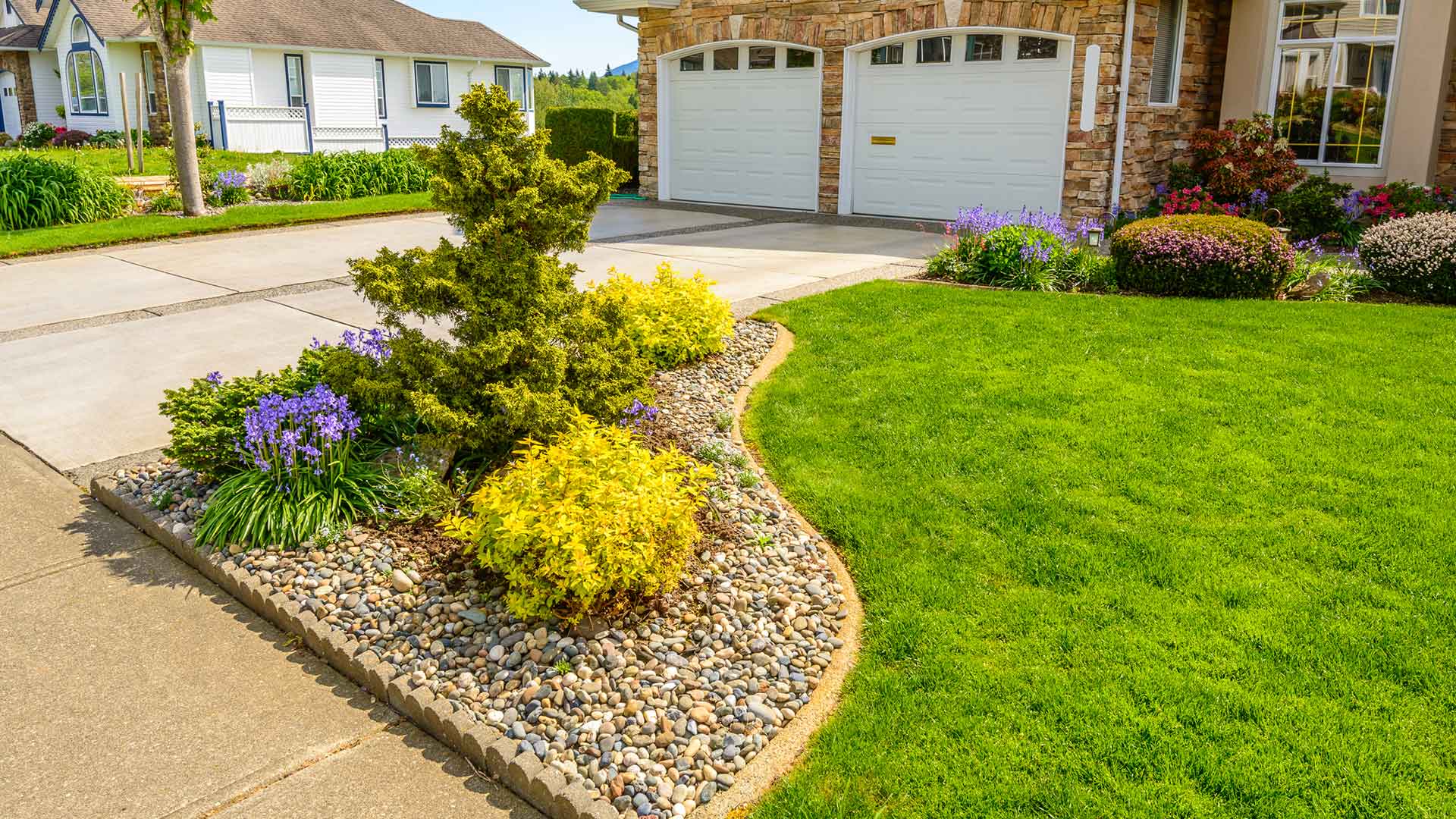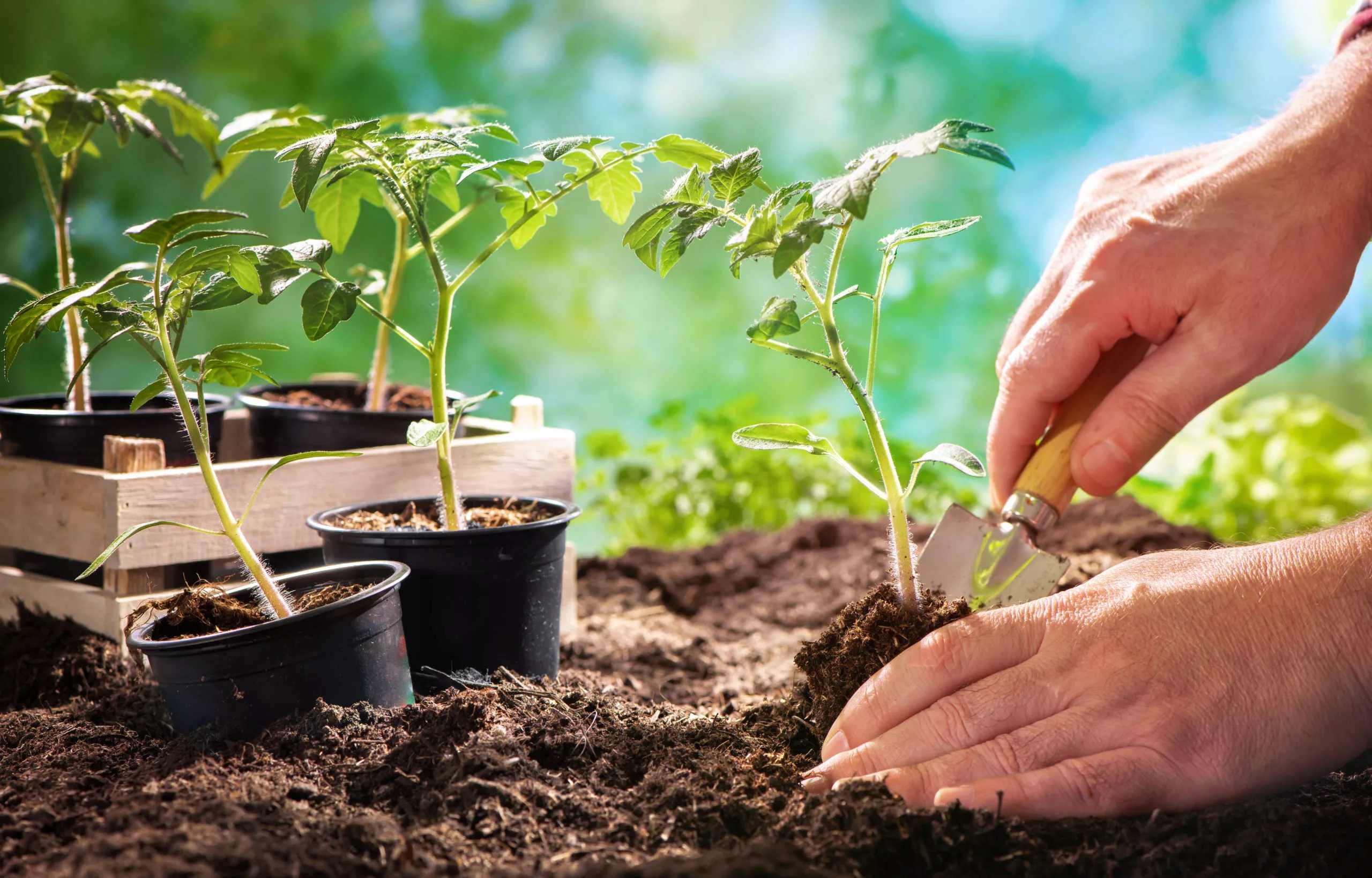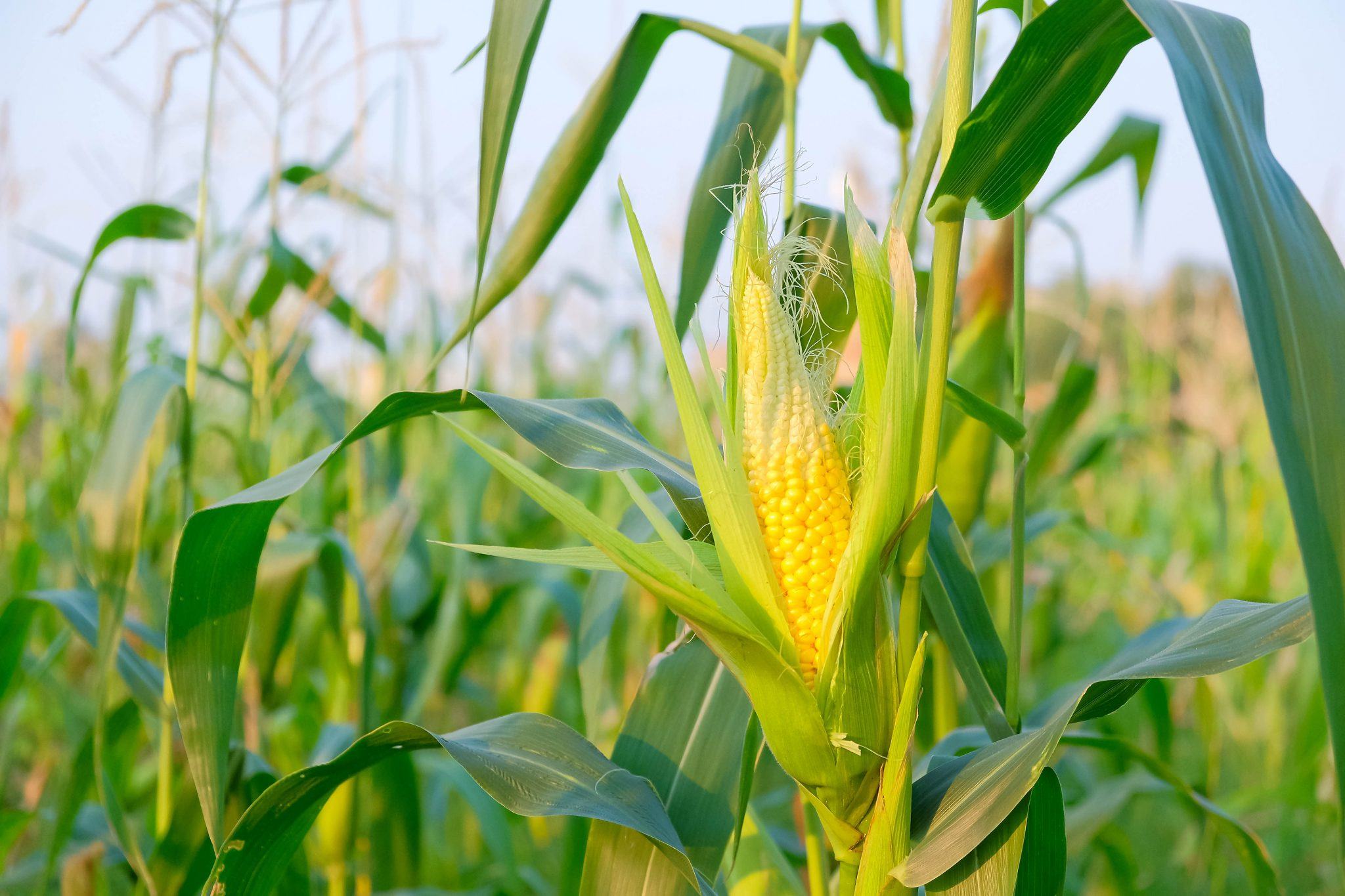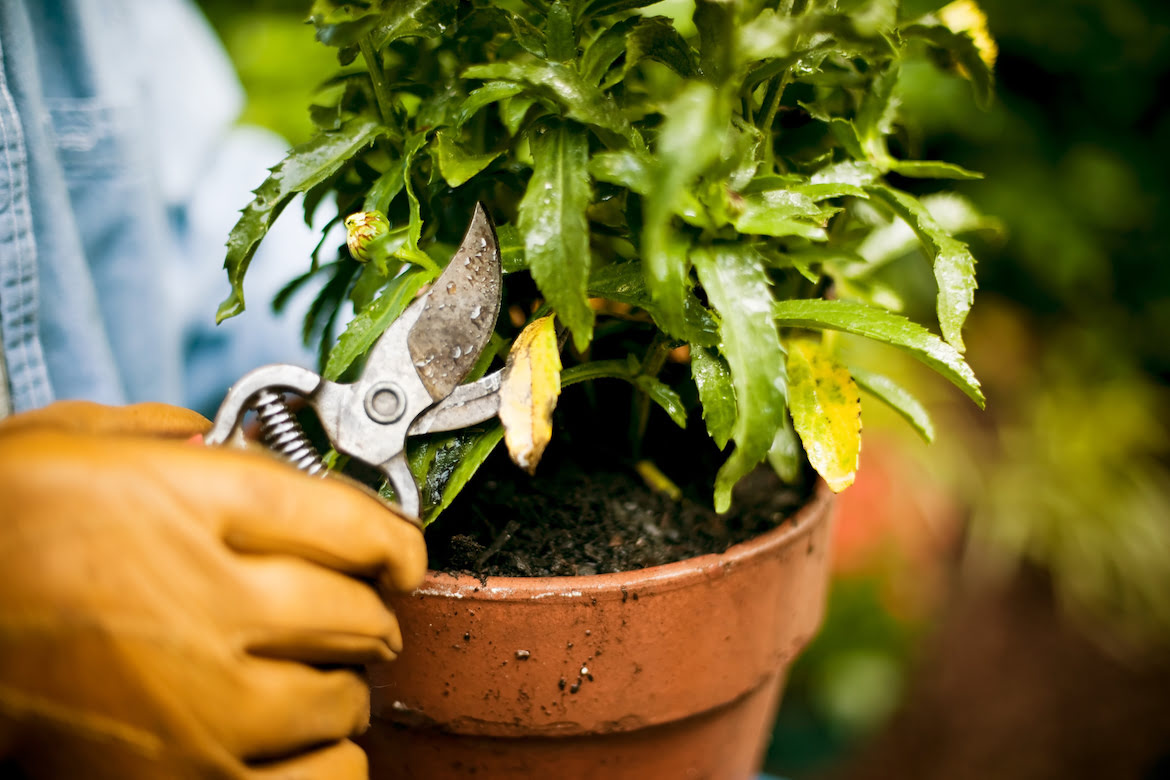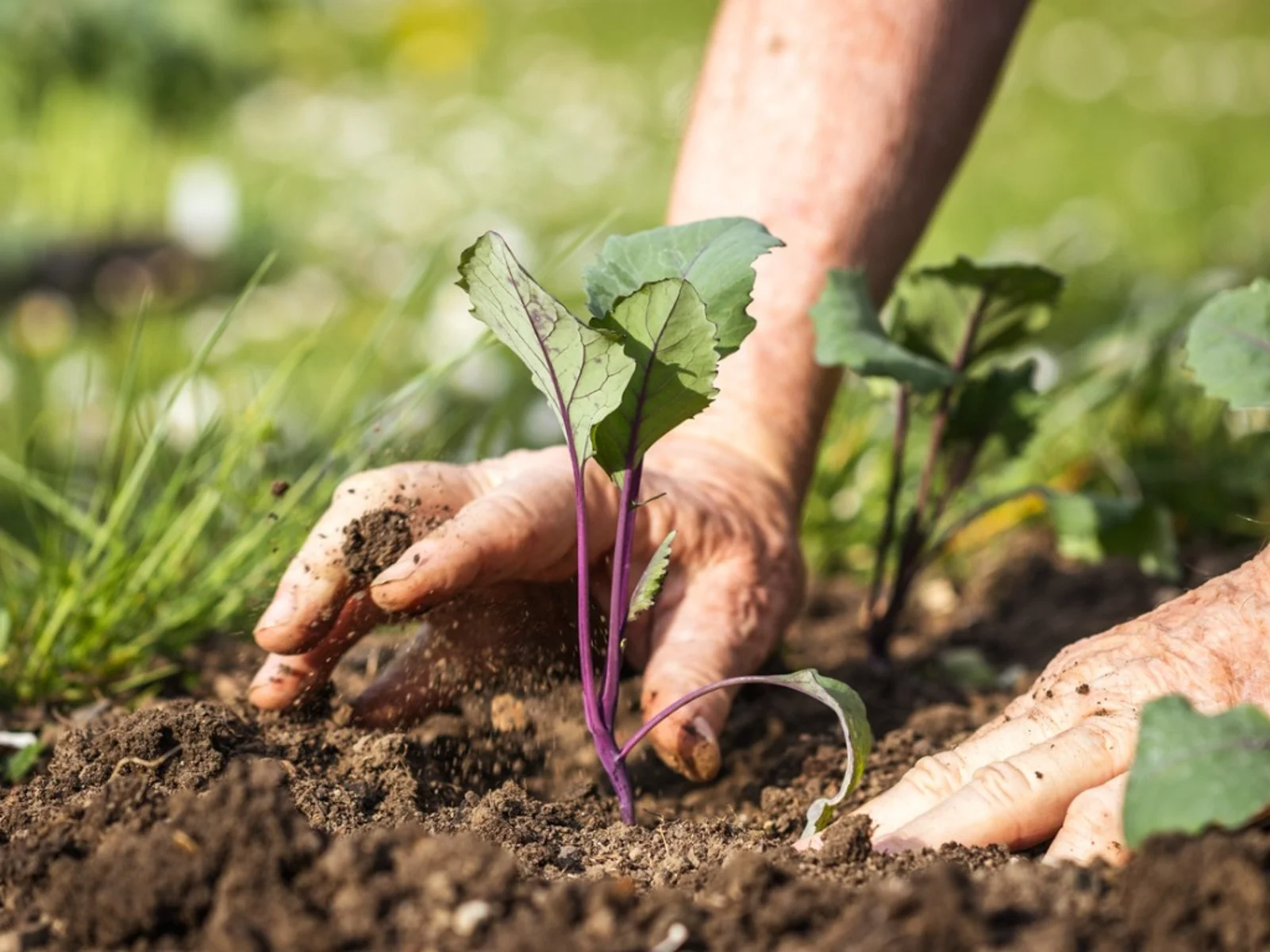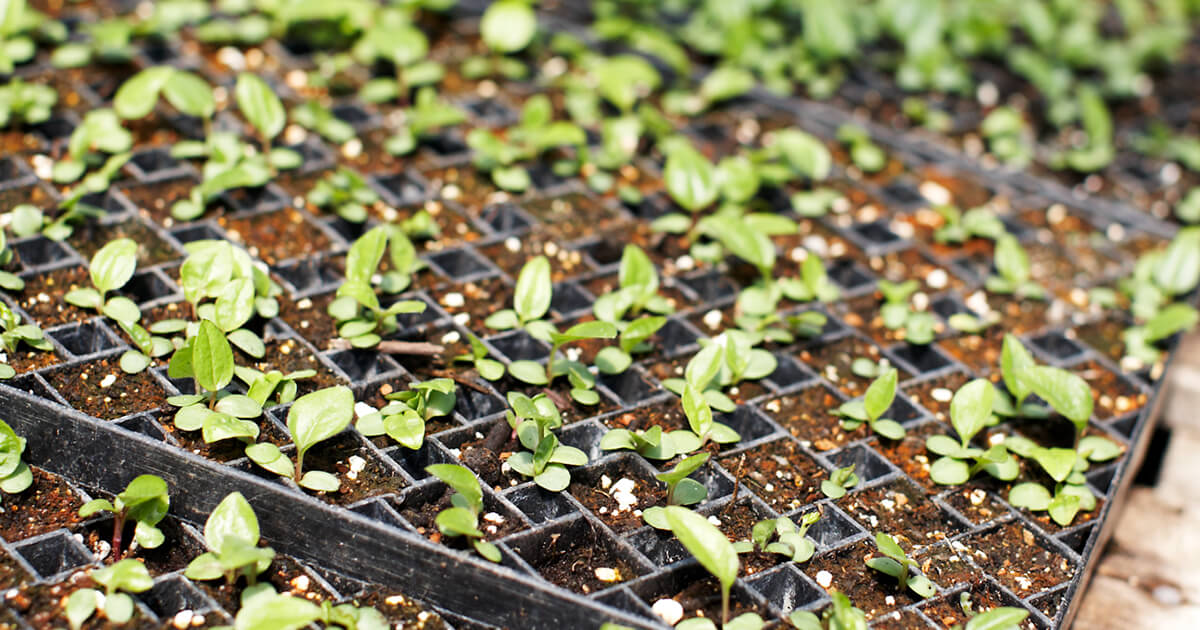Home>Gardening News and Trends>Gardening Trends>When Does Landscaping Season Start


Gardening Trends
When Does Landscaping Season Start
Modified: January 22, 2024
Discover the latest gardening trends and find out when the landscaping season begins. Stay ahead with the hottest ideas for your outdoor spaces.
(Many of the links in this article redirect to a specific reviewed product. Your purchase of these products through affiliate links helps to generate commission for Chicagolandgardening.com, at no extra cost. Learn more)
Table of Contents
- Introduction
- Factors Affecting the Start of Landscaping Season
- Geographic Variations in Landscaping Season
- Climate Considerations for Landscaping Season
- Recommended Landscaping Activities for Early Season
- Tools and Equipment Preparation for Landscaping Season
- Importance of Spring Cleanup in Landscaping
- Common Challenges for Landscaping in the Early Season
- Benefits of Starting Landscaping Early in the Season
- Conclusion
Introduction
Welcome to the world of landscaping, where creativity meets nature and transforms outdoor spaces into breathtaking havens. Whether you have a small backyard or a vast garden, landscaping is a wonderful way to add beauty and functionality to your outdoor environment. However, to make the most of your landscaping endeavors, it’s crucial to understand when the landscaping season begins and how to prepare for it.
Landscaping season typically kicks off in the early spring when nature awakens from its winter slumber. As the weather warms up and the days become longer, garden enthusiasts eagerly anticipate the opportunity to breathe life back into their landscapes. The start of landscaping season is always an exciting time, filled with endless possibilities and the promise of vibrant colors and lush greenery.
But what factors determine when the landscaping season officially begins? The answer lies in several key factors, including geographic variations and climate considerations. Additionally, proper preparation and awareness of early season tasks and challenges can significantly impact the success of your landscaping endeavors.
In this comprehensive guide, we will delve into the factors affecting the start of landscaping season, the geographic variations in landscaping season, the climate considerations to keep in mind, and the recommended landscaping activities for the early season. We will also explore the importance of spring cleanup and discuss common challenges that gardeners face during the early months of the landscaping season. Finally, we will highlight the benefits of starting landscaping early in the season.
So, get ready to roll up your sleeves, grab your gardening tools, and embark on an exciting journey as we explore the world of landscaping and discover the magic that awaits in the upcoming season.
Factors Affecting the Start of Landscaping Season
The start of the landscaping season can vary depending on several factors. Understanding these factors is essential for planning and preparing your outdoor projects. Let’s explore the key factors that influence the beginning of the landscaping season:
- Climate: The climate plays a significant role in determining when the landscaping season starts in a particular region. Warmer climates have longer growing seasons, allowing for an earlier start to landscaping activities. In contrast, colder climates may experience a shorter season with a later start.
- Temperature: Temperature fluctuations also contribute to the start of landscaping season. Most plants and flowers have specific temperature requirements for optimal growth. As temperatures begin to rise consistently above freezing, it signals that the ground is thawed and ready for planting. Monitoring the temperature patterns in your area can help determine when it’s safe to start landscaping projects.
- Soil Conditions: Soil conditions play a crucial role in the success of landscaping endeavors. Before beginning any outdoor projects, it’s important to assess soil moisture levels and ensure that the soil is workable. If the soil is still too wet or frozen, it’s best to wait until it has dried out and thawed, allowing for proper soil preparation and planting.
- Plant Hardiness Zones: Plant hardiness zones are geographical areas categorized by the average annual minimum temperature. These zones help determine which plants are most suitable for a particular region. The start of the landscaping season can vary depending on the plant hardiness zone, as certain plants require specific temperatures to thrive. Consulting the plant hardiness zone map can give gardeners insights into when to begin their landscaping projects.
- Local Regulations: It’s essential to be aware of any local regulations or restrictions that may impact the start of the landscaping season. Some areas have specific guidelines regarding when certain activities, such as pruning or planting, can be undertaken. Familiarize yourself with any local ordinances to ensure compliance and successful landscaping projects.
By considering these factors, you can determine when the landscaping season starts in your specific area. Understanding the climate, temperature patterns, soil conditions, plant hardiness zones, and local regulations will help you plan and execute your landscaping projects with success and efficiency.
Geographic Variations in Landscaping Season
One of the fascinating aspects of landscaping is how the start of the season can vary across different geographic regions. Factors such as latitude, elevation, and proximity to bodies of water all contribute to these variations. Let’s explore the geographic differences in the landscaping season:
1. Northern Regions: In northern regions with colder climates, the landscaping season tends to start later. These regions often experience long and harsh winters, with the ground remaining frozen well into spring. As the frost thaws, typically in late April or early May, gardeners in these areas can begin their landscaping activities. This delayed start doesn’t hinder the beauty that can be achieved; instead, gardeners in these regions enjoy a condensed but vibrant growing season.
2. Southern Regions: Southern regions generally have milder winters and longer growing seasons. The landscaping season in these areas often starts earlier, as temperatures rise steadily in late winter or early spring. Gardeners in southern regions have the advantage of being able to engage in outdoor projects and plantings earlier in the year, allowing for more time to enjoy the fruits of their labor.
3. Coastal Areas: Coastal areas experience additional variations due to the influence of the ocean on the local climate. The maritime climate tends to moderate temperature extremes, resulting in milder winters and cooler summers. As a result, the landscaping season in coastal areas may start earlier than inland regions, as the oceanic influence maintains more favorable conditions for plant growth.
4. Mountainous Regions: Mountainous regions have unique microclimates due to the higher elevation. These areas often have shorter growing seasons with cooler temperatures. The start of the landscaping season in mountainous regions can be delayed compared to nearby lowland areas, as the higher altitude can lead to prolonged periods of snow and frost. Gardeners in these regions must be mindful of the specific challenges that arise from the mountainous terrain.
While these geographic variations present unique challenges, they also offer exciting opportunities for creativity and adaptation. Understanding the specific characteristics of your region will help you make informed decisions about when to begin your landscaping activities and what types of plants are best suited for your area.
Climate Considerations for Landscaping Season
When planning your landscaping projects, it’s crucial to take climate considerations into account. Understanding your region’s climate will help you select the right plants, determine the appropriate timing for various activities, and ensure the long-term success of your landscape. Here are some important climate considerations to keep in mind:
Temperature Range: The temperature range in your region has a significant impact on the types of plants that can thrive in your landscape. Different plants have specific temperature preferences, and selecting those well-suited to your climate will promote healthy growth and reduce the risk of plant stress or failure. Consult local gardening resources or speak to experts at nurseries to learn about temperature requirements for the plants you wish to incorporate into your landscape.
Frost Dates: Frost dates mark the beginning and end of the growing season, with the last frost date in spring indicating the start of the landscaping season. Being aware of your region’s average frost dates is essential for timing activities like planting annuals and starting seeds indoors. Sowing seeds or planting too early can result in damage or loss due to late frost, while planting too late may limit the growth potential of certain plants.
Annual Rainfall: Understanding the average rainfall patterns in your region is crucial for maintaining proper irrigation and preventing water stress in your landscape. Some plants thrive in wetter conditions, while others prefer drier environments. Factoring in the rainfall patterns of your region will help you select plants that are well-adapted to your landscape’s moisture levels and minimize the need for supplemental watering.
Drought Tolerance: In regions prone to periods of drought, selecting drought-tolerant plants is key to maintaining a resilient and sustainable landscape. These plants are adapted to survive with minimal water and can withstand long periods of dryness. Incorporating drought-tolerant plants not only conserves water but also reduces the maintenance required to keep your landscape healthy in challenging conditions.
Sun and Shade Exposure: Understanding the sun and shade exposure in different areas of your landscape is essential for selecting plants that thrive in specific light conditions. Some plants require full sun for optimal growth, while others prefer partial shade or full shade. By taking note of the sun and shade patterns in your landscape, you can ensure that your plants receive the right amount of light to flourish.
Microclimates: Microclimates are small-scale climate variations within a larger region, often caused by local topography or human-made structures. These microclimates can result in variations in temperature, humidity, and wind patterns. Identifying microclimates in your landscape can help you create more favorable growing conditions for certain plants that may be more sensitive to extreme temperatures or wind exposure.
Considering these climate factors will enable you to make informed decisions about plant selection, timing of activities, and appropriate care for your landscape. By working in harmony with your region’s climate, you can create a beautiful and sustainable landscape that thrives throughout the seasons.
Recommended Landscaping Activities for Early Season
The early season is an excellent time to kick-start your landscaping projects and give your outdoor space a fresh start. With the arrival of spring, there are several recommended activities you can engage in to set the foundation for a thriving and beautiful landscape. Here are some ideas for landscaping activities to tackle during the early season:
1. Clean Up and Clear Out: Begin by cleaning up your landscape from the remnants of winter. Remove any dead leaves, branches, or debris that may have accumulated. Rake and remove thatch from the lawn to allow for better airflow and healthier grass growth. Clearing out your landscape will create a clean canvas upon which you can work.
2. Soil Preparation: Prepare the soil for planting by loosening it with a garden fork or tiller. This will improve drainage, aeration, and nutrient uptake for your plants. Add organic matter such as compost or well-rotted manure to enrich the soil and provide essential nutrients for healthy plant growth.
3. Pruning and Trimming: Assess your trees, shrubs, and any overgrown or damaged plants. Prune dead or damaged branches to promote new growth and shape the plants. Trimming back ornamental grasses and perennials that didn’t receive a winter cut will encourage new shoots to emerge.
4. Planning and Designing: Take the time to plan and design your landscape. Consider the layout, focal points, and the overall aesthetic you want to achieve. Research and select the plants and flowers that are well-suited to your climate and desired style. Planning ahead will help you make informed decisions and create a cohesive and harmonious landscape.
5. Start Seeds Indoors: If you want to grow your plants from seeds, the early season is the perfect time to start them indoors. This allows you to get a head start on the growing season and gives you more variety and flexibility in plant selection. Follow the instructions on the seed packets for optimal germination and transplantation timing.
6. Clean and Maintain Garden Tools: Before you fully dive into your landscaping activities, take some time to clean and maintain your garden tools. Remove any dirt or rust, sharpen blades, and oil any moving parts. This will ensure that your tools are in good working condition and ready for use throughout the season.
7. Install Hardscape Features: If you’ve been considering adding hardscape features to your landscape, such as paths, patios, or retaining walls, the early season is an ideal time to start these projects. Installing hardscape elements early allows for ample time for the materials to settle and ensures that they’re ready to be enjoyed throughout the summer.
The early season presents a window of opportunity to lay the groundwork for a successful landscaping season. By tackling these recommended activities, you’ll set yourself up for a vibrant and thriving landscape that will bring joy and beauty to your outdoor space throughout the year.
Tools and Equipment Preparation for Landscaping Season
Preparing your tools and equipment for the upcoming landscaping season is essential to ensure smooth and efficient operations. Properly maintained tools will not only make your landscaping tasks easier but also help extend the lifespan of your equipment. Here are some steps to take for effective tools and equipment preparation:
1. Inspect and Clean: Begin by inspecting your tools and equipment for any signs of damage, rust, or wear. Inspect handles for cracks, blades for sharpness, and moving parts for proper functioning. Clean your tools thoroughly by removing any dirt, debris, or sap that may have accumulated during the previous season. Use a wire brush or steel wool for tougher cleaning tasks.
2. Sharpen Blades: Sharp blades make cutting and pruning tasks much more efficient and precise. Use a sharpening tool or file to sharpen blades on pruners, shears, and hedge trimmers. A sharp lawnmower blade will also ensure a clean cut and promote healthy grass growth. If you’re unsure about sharpening techniques, consult a professional or take your tools to a local garden center.
3. Lubricate Moving Parts: Moving parts on tools and equipment, such as pivot points on pruners or the wheels of a lawnmower, should be lubricated to ensure smooth operation. Apply a light machine oil or silicone spray to hinges, springs, and any other parts that require lubrication. This will reduce friction and prevent rust buildup.
4. Replace Worn or Damaged Parts: Check for worn or damaged parts that may need to be replaced. This can include cracked handles, worn-out blades, or missing components. Replace any damaged parts to ensure the safety and efficiency of your tools. Additionally, check the condition of hoses, nozzles, and fittings on watering systems or pressure washers, and replace any that show signs of wear or leakage.
5. Organize and Store: Proper storage is crucial for maintaining the longevity of your tools and equipment. Invest in a storage solution that protects from moisture or extreme temperatures. Use hooks, racks, or tool sheds to keep your tools organized and easily accessible. Keep your tools off the ground to prevent rust and damage.
6. Check Power Tools: If you use power tools, such as trimmers, chainsaws, or lawnmowers, ensure they are in good working condition. Check the spark plugs, filters, and batteries. Replace any worn-out parts or schedule a maintenance service if necessary. Follow the manufacturer’s instructions for proper maintenance and usage.
7. Safety Precautions: Before using any tools or equipment, review safety guidelines and precautions. Wear appropriate protective gear, such as safety glasses, gloves, and sturdy footwear. Inspect extension cords for damage and ensure they are rated for outdoor use. Always follow safe operating practices to prevent accidents or injuries.
By taking the time to prepare your tools and equipment for the landscaping season, you’ll save time and effort while ensuring their longevity. Well-maintained tools will ensure that your landscaping tasks are completed efficiently, allowing you to enjoy the beauty and satisfaction of a well-maintained outdoor space.
Importance of Spring Cleanup in Landscaping
Spring cleanup is a vital part of maintaining a healthy and vibrant landscape. After the winter months, your outdoor space may be in need of some attention and cleaning. Engaging in spring cleanup not only improves the aesthetics of your landscape but also promotes the overall health and longevity of your plants. Here are some reasons why spring cleanup is important:
1. Remove Debris: Spring is the perfect time to clean up any debris that has accumulated over the winter. Dead leaves, fallen branches, and other debris can block sunlight and airflow, hindering the growth of plants and promoting disease. By removing debris, you allow your plants to receive adequate light, air, and nutrients for optimal growth.
2. Prevent Pest and Disease Problems: Dead or decaying plant material can attract pests and diseases. Removing this material during spring cleanup helps mitigate potential pest infestations and disease outbreaks. Cleaning up and disposing of infected or pest-infested plant debris reduces the risk of spreading pests and disease to healthy plants.
3. Prepare for New Growth: Spring cleanup sets the stage for new growth and allows plants to thrive. Raking and removing dead grass and thatch from the lawn helps improve airflow and promotes healthy grass growth. Trimming back dead or damaged branches on shrubs and trees stimulates new growth and improves their overall appearance.
4. Weed Control: Spring is the time when weeds start to emerge and compete with your desirable plants for resources. Removing weeds during spring cleanup prevents them from establishing and taking over your landscape. It’s easier to control and remove weeds when they are small and haven’t yet produced seeds.
5. Enhance Curb Appeal: A well-maintained landscape with a clean and tidy appearance enhances the curb appeal of your property. Spring cleanup gives your landscape a fresh and inviting look, increasing its visual appeal and making a positive impression on visitors and passersby.
6. Identify Landscape Issues: While cleaning up your landscape, you have the opportunity to assess its condition and identify any potential problems. Look for signs of damage or stress in plants, such as pest infestations, disease symptoms, or soil erosion. Identifying these issues early allows for prompt intervention and prevents further damage to your landscape.
7. Maintain a Healthy Ecosystem: A well-maintained and clean landscape contributes to a healthy ecosystem. By properly disposing of plant debris and following sustainable landscaping practices, you minimize the potential for pests and diseases to spread and promote a balanced and thriving ecosystem in your outdoor space.
Spring cleanup is an essential step in preparing your landscape for the growing season ahead. By removing debris, preventing pests and diseases, preparing for new growth, controlling weeds, enhancing curb appeal, and maintaining a healthy ecosystem, you’ll set the foundation for a beautiful and thriving landscape throughout the year.
Common Challenges for Landscaping in the Early Season
Landscaping in the early season comes with its own set of challenges. As you begin your outdoor projects, it’s important to be aware of these challenges to overcome them effectively. By understanding and addressing these common challenges, you can ensure a successful start to your landscaping endeavors. Here are some challenges you may encounter in the early season:
1. Unpredictable Weather: Early season weather can be erratic, with fluctuating temperatures and sporadic rainfall. These unpredictable weather patterns can pose challenges for plant growth and survival. Sudden cold snaps or late frosts can damage tender plants, while heavy rainfall can lead to soil erosion. Stay vigilant and monitor weather forecasts to prepare and protect your plants accordingly.
2. Soil Condition: After winter, the soil may be compacted and less fertile. Cold temperatures and excess moisture can cause soil compaction, limiting airflow and nutrient availability for plants. Additionally, soil pH levels may need to be adjusted. Conducting a soil test and amending the soil with organic matter can improve its structure and fertility, creating an optimal environment for plant growth.
3. Pest and Disease Management: Pests and diseases may become active as the weather warms up. Insects such as aphids, slugs, and snails can damage plants, while fungal diseases can thrive in the damp conditions of early spring. Regularly inspect your plants for any signs of pests or diseases and take appropriate preventive measures, such as applying organic pest control methods or using disease-resistant plant varieties.
4. Weed Growth: Weeds can quickly establish themselves in the early season and compete with your desired plants for nutrients and space. It’s important to stay on top of weed control by regularly removing them manually or using organic weed control methods. Applying a layer of mulch can also help suppress weed growth and conserve soil moisture.
5. Slow Plant Growth: In the early season, plants may take some time to establish and show visible growth. Cool temperatures and limited sunlight can slow down the growth rate of both newly planted and existing plants. Be patient and provide proper care, including regular watering and adequate nutrients, to support healthy plant growth.
6. Damage Repair: Winter weather conditions can cause damage to your landscape, including broken branches, damaged shrubs, or dead patches of grass. Addressing and repairing winter damage is essential to restore the health and aesthetic of your landscape. Prune broken branches, replace damaged plants, and reseed or patch bare areas in the lawn.
7. Limited Plant Availability: In the early season, some nurseries and garden centers may have limited plant availability, especially for warm-season annuals and tender perennials. It’s important to plan your landscaping projects accordingly and choose plants that are suitable for the current season and climate. Consider starting seeds indoors or working with plants that are more resilient to cooler temperatures.
By anticipating and addressing these common challenges, you can navigate through the early season with confidence and ensure the success of your landscaping projects. Adaptation, proper care, and timely intervention will help you overcome these challenges and create a beautiful and thriving landscape.
Benefits of Starting Landscaping Early in the Season
Starting your landscaping projects early in the season offers numerous benefits and advantages for both you and your outdoor space. By taking advantage of the early season window, you can set the stage for a beautiful and thriving landscape. Here are some benefits of starting landscaping early in the season:
1. Longer Growing Season: One of the significant advantages of starting early is the extended growing season. By getting a head start on your landscaping projects, you can take full advantage of the optimal growing conditions and maximize the time your plants have to flourish. This translates into more abundant blooms, healthier foliage, and a lusher landscape overall.
2. Stronger and Healthier Plants: By planting and establishing your plants early in the season, you give them ample time to establish strong root systems. This is crucial for their overall health and resilience, allowing them to better withstand the challenges of the growing season, such as drought or extreme temperatures. Early planting also reduces transplant shock and improves the plants’ ability to absorb nutrients from the soil.
3. Better Plant Selection Availability: Starting early in the season gives you a wider range of plant selection to choose from. Nurseries and garden centers often have a larger variety of plants available in the early season, including popular and unique specimens. You have the opportunity to handpick the plants that best suit your landscape design, ensuring a diverse and visually appealing result.
4. More Time for Landscape Planning and Design: Starting early provides you with more time to plan and design your landscape. You can carefully consider the layout, focal points, and overall aesthetic you wish to achieve. This leads to better decision-making and allows for adjustments and fine-tuning before the planting and construction phases begin. Adequate planning helps create a cohesive and harmonious landscape that reflects your vision.
5. Early Pest and Weed Control: By starting early, you have a head start in controlling pests and weeds. Regular monitoring and early intervention can help prevent pest infestations and weed overgrowth before they become major nuisances. Addressing these issues early on not only reduces the workload later in the season but also promotes healthier plant growth by minimizing competition for resources.
6. Increased Enjoyment and Aesthetic Pleasure: By starting early in the season, you’ll have a longer period to enjoy the fruits of your labor. With a well-established and blooming landscape, you and your family can spend more time outdoors, relaxing in the beauty of your surroundings. The early season also offers the opportunity to witness the gradual transformation of your landscape as it unfolds throughout the rest of the year.
7. Time for Adjusting and Fine-Tuning: Starting early allows for adjustments and fine-tuning of your landscaping projects. If you encounter any issues or changes in your initial plan, you have the flexibility and time to make necessary adjustments without feeling rushed. This ensures a more seamless and successful outcome for your landscaping efforts.
By starting your landscaping projects early in the season, you can harness these benefits and set the stage for a remarkable outdoor space. Enjoy the advantages of a longer growing season, stronger and healthier plants, better plant selection, time for planning and design, early pest and weed control, increased enjoyment, and the ability to make adjustments along the way. Embrace the early season and watch your landscape come to life in vibrant beauty.
Conclusion
As the early season approaches, it’s time to embrace the excitement and opportunities that come with landscaping. By understanding the factors affecting the start of the landscaping season, such as climate and geographic variations, you can plan and prepare effectively. Taking into account climate considerations and engaging in recommended landscaping activities, such as spring cleanup and early planting, sets the foundation for a thriving landscape.
While landscaping in the early season comes with challenges, such as unpredictable weather and slow plant growth, proper tools and equipment preparation and awareness of common issues like pests and weeds can help overcome these obstacles. By starting early, you gain a multitude of benefits, including a longer growing season, stronger and healthier plants, greater plant selection availability, more time for planning and design, early pest and weed control, increased enjoyment, and the ability to make adjustments along the way.
So, roll up your sleeves, sharpen your tools, and embrace the magic of the early season. Let your creativity flow as you transform your outdoor space into a stunning and thriving landscape. With careful planning, proper care, and a touch of patience, you’ll create an oasis that brings joy, beauty, and serenity to your life throughout the year.
